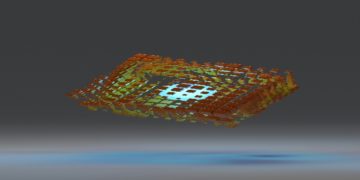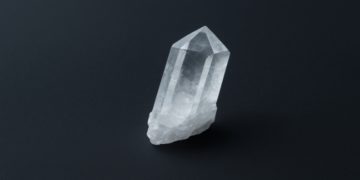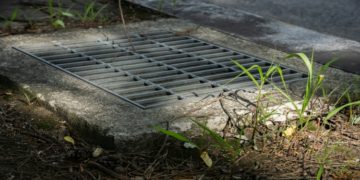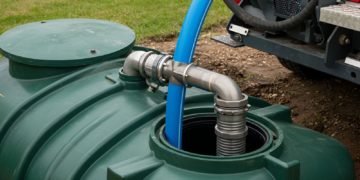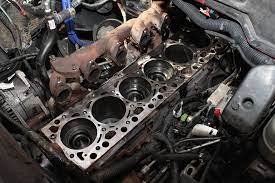The 6.7L Cummins engine is a workhorse known for its durability, efficiency, and power. However, like any complex engine system, some components can limit performance or cause issues over time. Two hot topics among diesel enthusiasts are the grid heater delete and the 6.7 Cummins grid heater bolt recall. In this article, we delve into the purpose and function of the grid heater, explore why many owners opt for a grid heater delete, and discuss the issues surrounding grid heater bolts, including recalls. Understanding these aspects allows you to make informed decisions to maximize your 6.7L Cummins performance and reliability.
Understanding the Grid Heater on the 6.7L Cummins
What Is the Grid Heater?
In the 6.7L Cummins engine, the grid heater delete the 6.7 Cummins part of the air intake system. Its primary function is to warm the incoming air during cold starts, which improves fuel atomization and facilitates smoother engine startup in cold weather. By ensuring that the engine receives adequately heated air, the grid heater helps reduce white smoke emissions and minimizes the stress on the engine during the initial combustion phase.
How the Grid Heater Works
The grid heater is typically a metal element placed in the intake tract, designed to absorb heat from the engine and transfer it to the incoming air. This process is particularly beneficial during cold weather, as it helps the engine reach its optimal operating temperature more quickly. However, this component is not without its drawbacks.
The Case for Grid Heater Delete
Why Consider Deleting the Grid Heater?
Despite its benefits in cold-weather performance, the grid heater can also restrict airflow, which may hinder the engine’s performance under certain conditions. Here are several reasons why diesel enthusiasts should consider performing a grid heater delete on their 6.7L Cummins:
Improved Airflow and Engine Breathing:
Removing the grid heater can eliminate one of the key restrictions in the intake system. With a less obstructed path, cooler and denser air enters the engine, leading to more efficient combustion. This improved airflow can translate into significant gains in horsepower and torque, which is particularly noticeable in high-performance applications. The prospect of these performance improvements can be truly exciting for diesel enthusiasts.
Enhanced Throttle Response:
With the grid heater removed, the engine experiences a reduced intake resistance. This means that when you press on the accelerator, the throttle responds more quickly, providing a more immediate and aggressive response. This can be a significant advantage for those requiring quick throttle response for towing, off-roading, or racing.
Lower Exhaust Gas Temperatures (EGTs):
A more efficient intake system that delivers cooler air can help lower EGTs. Lower EGTs reduce the thermal stress on engine components, potentially prolonging engine life and improving overall reliability.
Reduced Maintenance Concerns:
Over time, the grid heater can accumulate carbon deposits and become a point of failure. Deleting the grid heater eliminates the need for regular cleaning and maintenance of this component, reducing the chances of mechanical issues associated with carbon buildup.
Considerations Before Deleting the Grid Heater
While the benefits of a grid heater deletion are appealing, there are essential factors to consider before making this modification:
Cold Weather Performance:
The grid heater is essential for ensuring reliable cold starts. In regions with extremely low temperatures, removing the grid heater might lead to hard starts, increased white smoke during startup, and potential rough idle conditions. Owners in cold climates should weigh the performance benefits against the possible drawbacks in winter performance.
Emissions Compliance:
Modifying or removing emissions-related components may have legal implications. It is essential to verify that a grid heater deletion complies with local regulations and will not result in penalties during vehicle inspections.
Overall Vehicle Use:
Consider your typical driving conditions. If your truck is primarily used for heavy-duty performance, such as hauling heavy loads or towing, or racing in moderate climates, the benefits of improved airflow and reduced EGTs may outweigh the need for the grid heater. Conversely, if your vehicle is your primary mode of transportation in cold weather, you may need to explore alternative solutions that maintain some intake air heating.
The Issue of Grid Heater Bolt Recall
Common Problems with Grid Heater Bolts
One significant concern in the diesel community is the grid heater bolts. These bolts secure the grid heater assembly to the intake system, and over time, they can become problematic due to several factors:
Corrosion and Rust:
Exposure to moisture, salt, and diesel exhaust can lead to the corrosion of grid heater bolts. Corroded bolts may weaken and eventually fail, compromising the integrity of the grid heater assembly.
Stripping and Loosening:
Continuous vibrations and thermal cycling in the engine bay can cause the grid heater bolts to loosen or strip. Loose bolts can lead to improper sealing of the grid heater, resulting in vacuum leaks or reduced performance.
Bolt Breakage:
In severe cases, weakened bolts can break entirely. Broken bolts pose a significant risk, as fragments may fall into the intake system and cause further damage to the engine. This could lead to costly repairs and potential safety hazards, making it crucial to address the recall promptly.
Understanding the Recall
Recent reports within the diesel community have highlighted a grid heater bolt recall for specific 6.7L Cummins engines. The recall addresses the safety and performance concerns related to these bolts. It ensures that affected vehicles receive proper inspection, maintenance, or replacement of the compromised bolts to prevent potential engine damage or failure.
What the Recall Means for Owners
If your 6.7L Cummins engine is affected by the grid heater bolt recall, it is crucial to address the issue promptly. Here are steps to consider:
Verification:
Check with your vehicle manufacturer or authorized service center to determine if your engine is subject to the grid heater bolt recall. This verification is essential to know whether you need to take action.
Inspection:
Even if your vehicle is not officially recalled, inspecting the grid heater bolts for signs of corrosion, stripping, or loosening is a proactive step. Regular inspections can prevent unexpected failures and potential engine damage, giving you a sense of control over your vehicle’s maintenance and performance.
Maintenance and Repair:
If any issues are detected, have the bolts replaced or repaired by a qualified technician. In some cases, using high-quality replacement bolts or thread repair kits, which are designed to restore the integrity of stripped threads, can resolve the problem and restore the integrity of the grid heater assembly.
Record Keeping:
Keep detailed records of any inspections, repairs, or replacements performed. This documentation can be valuable for future maintenance and addressing warranty or recall-related concerns.
Integrating the Upgrades and Repairs for Optimal Performance
Synergistic Benefits
Complementary modifications include deleting a grid heater and addressing grid heater bolt issues. Removing the grid heater improves airflow and eliminates one of the familiar sources of maintenance problems, such as bolt corrosion and failure. When grid heater bolts are fixed or replaced, the intake system becomes more reliable, reducing the risk of engine damage from falling components or vacuum leaks.
Enhanced Engine Efficiency and Reliability
By combining these modifications, you can achieve a more efficient intake system that promotes better combustion, increased horsepower, and improved throttle response. The benefits extend beyond performance gains; a cleaner, more robust intake system can also contribute to lower EGTs, reduced engine stress, and extended overall engine life.
Real-World Impact
Diesel enthusiasts who have performed a grid heater delete on their 6.7L Cummins engines often report noticeable improvements in engine responsiveness and power delivery. Addressing grid heater bolt issues has been shown to prevent potential failures, leading to more dependable engine performance, especially under heavy loads or in demanding conditions.
Practical Tips for Diesel Enthusiasts
Stay Informed:
Keep up with the latest news and community discussions regarding grid heater deletes and bolt recalls. Knowledge of recent issues and solutions can help you make informed decisions about modifications and maintenance.
Consult Professionals:
Engage with experienced diesel mechanics or performance shops. Professional guidance can ensure that modifications are performed correctly and that any recalled components are appropriately addressed.
Regular Maintenance:
Incorporate regular inspections of the intake system into your maintenance routine. This includes checking for carbon buildup, verifying the condition of grid heater bolts, and ensuring that all modifications function as intended.
Evaluate Your Needs:
Consider your typical operating environment and driving conditions. If you frequently drive in cold climates, weigh the benefits of a grid heater against the potential for more brutal starts. Tailor your modifications to suit your specific performance and reliability requirements.
Document Modifications:
Maintain detailed records of any upgrades, repairs, or inspections. This documentation can be helpful for warranty claims, future maintenance, and when seeking professional advice.
Conclusion
The 6.7L Cummins engine remains a favorite among diesel enthusiasts due to its robust performance and durability. However, like any high-performance engine, it benefits from carefully considered modifications and regular maintenance. A grid heater delete can unlock enhanced airflow, improved throttle response, and lower exhaust gas temperatures while addressing grid heater bolt issues, especially in light of the recent recall, ensuring the long-term reliability of the intake system.
You can make informed decisions about your engine modifications by understanding the grid heater’s functions and the potential problems associated with its bolts. Whether you perform a grid heater delete, replace compromised bolts, or combine both strategies, these upgrades can significantly enhance your engine’s performance and longevity. With proper planning, professional guidance, and a commitment to regular maintenance, you can optimize your 6.7L Cummins to meet the demands of daily driving and high-performance applications, ensuring your engine remains a reliable workhorse for years.


